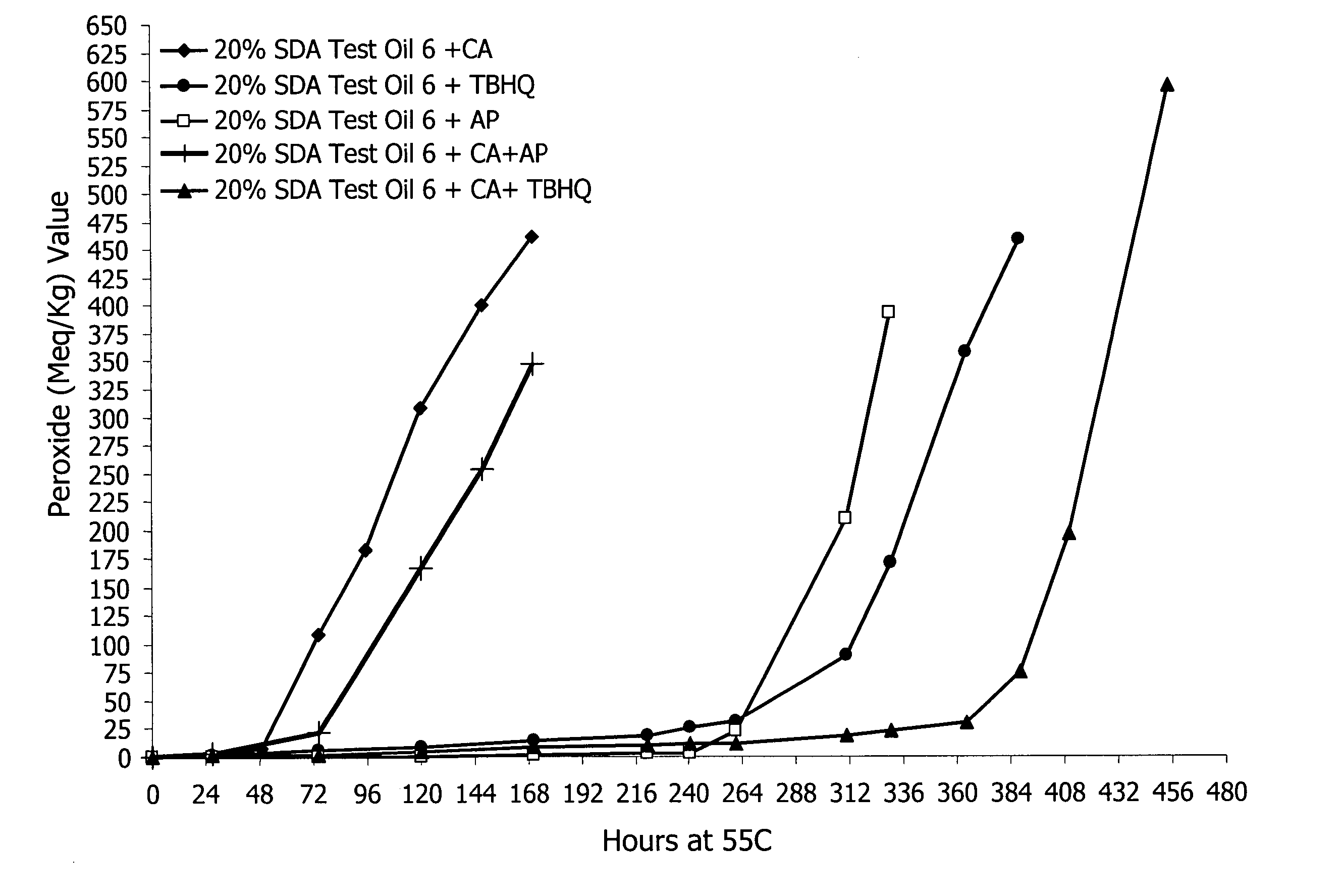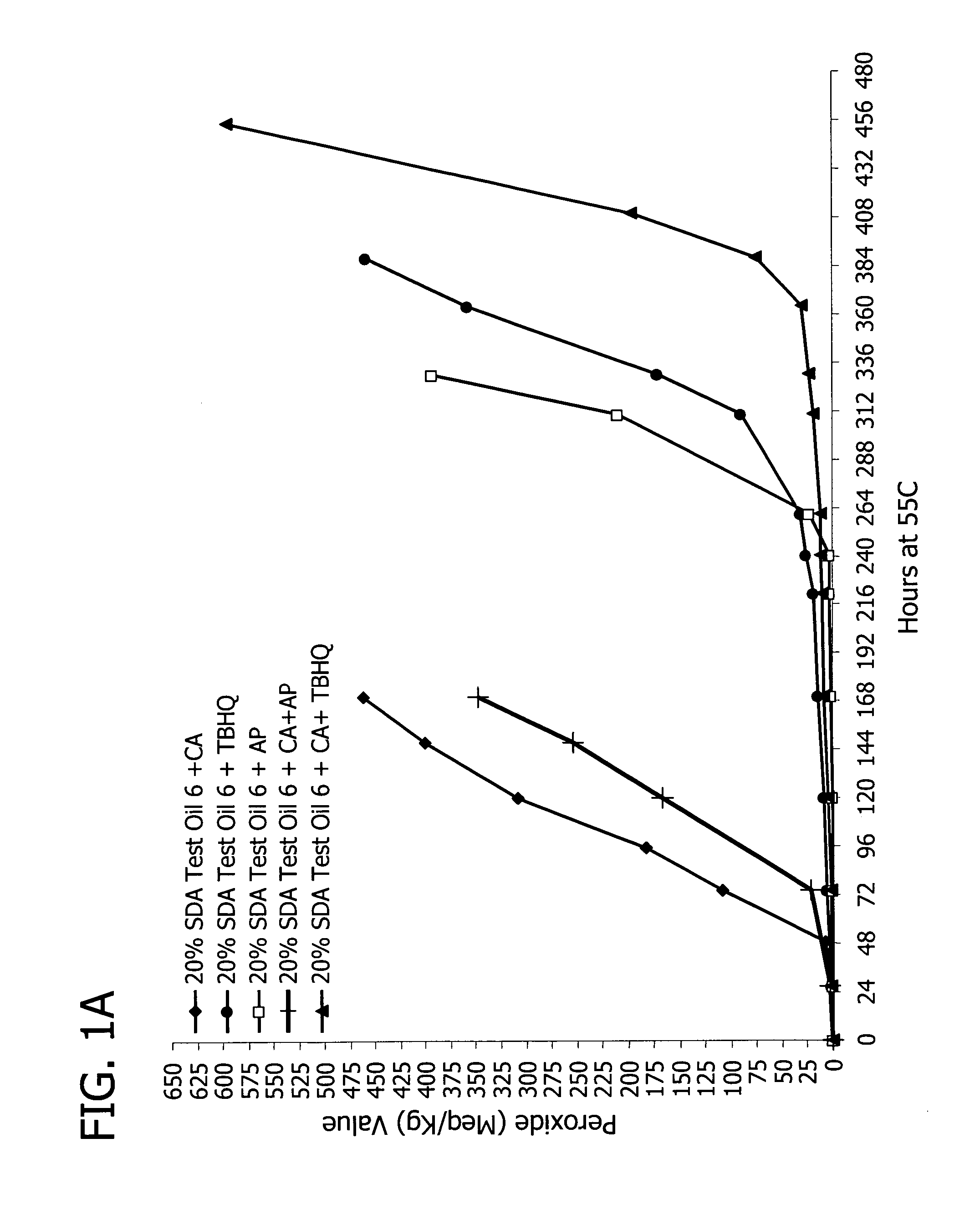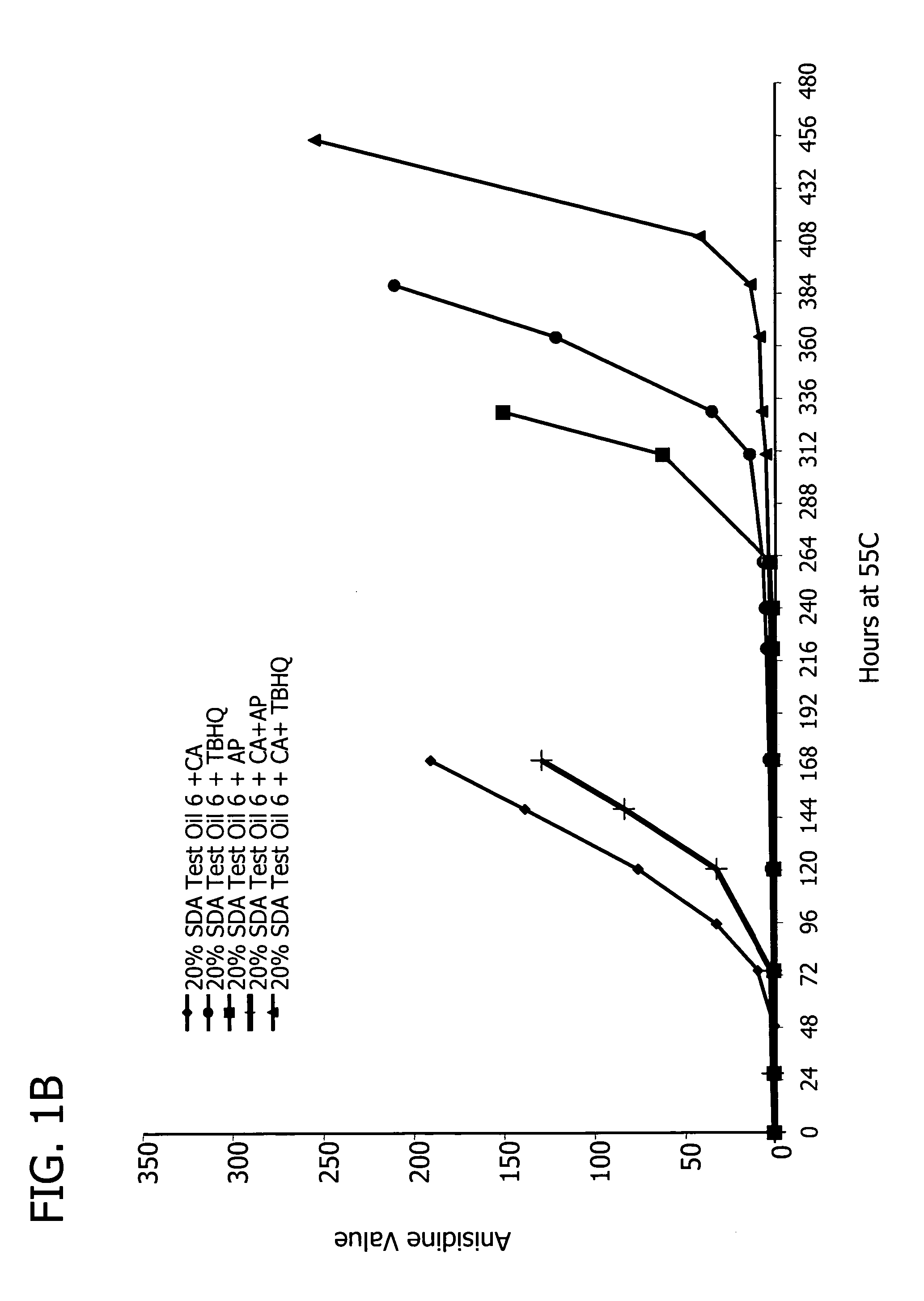High PUFA oil compositions
a composition and pufa oil technology, applied in the field of non-hydrogenated or partially hydrogenated non-animal oils, can solve the problems of unsatisfactory taste and odor, fish oil capsules can contain low levels of desired components, and retain undesirable levels of other components
- Summary
- Abstract
- Description
- Claims
- Application Information
AI Technical Summary
Problems solved by technology
Method used
Image
Examples
example 1
Accelerated Aging of Oils
[0102] A solution of each stabilizer was prepared in propylene glycol. The solution was vortexed on high for 5 minutes. In a nitrogen purged glove bag, the appropriate amount of each solution was added to 2.5 g (2.77 ml) test oils in 60 cc glass amber bottles with Teflon lids to yield a mixture. These mixtures were then vortexed on high for 1 minute. Portions of these mixtures were then removed with a plastic pipette and added to amber vials.
[0103] Unspiked samples of the neat oils were also prepared as described above (with out adding stabilizer). Each stabilizer was added at the following concentration: citric acid (CA) at 50 ppm, ascorbyl palmitate (AP) at 400 ppm, and t-butyl hydroquinone (TBHQ) at 120 ppm.
[0104] The vials (that contained neat oil and oil spiked with stabilizer(s)) were then opened in air until the headspace in the vials was sufficiently exchanged. The vials were recapped and then were heated to 55° C. in a water bath. Samples were ta...
example 2
Aging Studies at 55° C. and 25° C.
[0106] The oils included in this study were: 20% SDA Test Article (TA) processed at lab scale and pilot scale (PS), nulls that were isolines, and thus, were SDA negative (prepared using the process conditions of examples 45 and 46 described in U.S. patent application Ser. No. ______ entitled “Processes for Preparation of Oil Compositions” filed Nov. 4, 2005, attorney docket no. MTC 6921.201 (38-21 (53354C))), and a soy control oil 1. In addition, the 20% SDA oil was blended with either the soy control oil 1 or the null oil to generate a 4% SDA oil blend. A relative ranking in the stability of these oils based on the PV and AV vs. time at 55° C. starting with the least stabile oil is: TA-Lab<TA-(PS)<TA-PS with CA<TA-Lab with CA<<4% blend (TA-PS Nulls) with CA<4% blend (TA-PS plus soy control oil 1) with CA<Nulls<soy control oil 1 (See FIG. 2). Relative ranking of the stabilities was determined by comparison of the time at which the PV or AV value cr...
example 3
IR Thin Film Oxidation Studies
[0108] The method for the accelerated aging of oils and evaluation of oxidative stability was adapted from a published method from McGill University (J. Am. Oil. Chem. Soc., 2003, 80, 635-41; J. Am. Oil. Chem. Soc., 2004, 81, 111-6). The method was adapted in order to protect the oils from air during their preparation and ensure a consistent film thickness. The oil films were prepared on PTFE films (polytetrafluoroethylene, such as Teflon®) mounted in a rectangular cardboard card, which were conveniently mounted in an IR spectrometer. Cards were purchased from International Crystal Laboratories, Garfield, N.J., part no. 0006-7363.
[0109] The oil formulation for testing was prepared under argon in a glovebox. Typically, 0.2-0.5 g. was placed in a vial, which was then sealed and removed from the drybox. At least two infrared cards were labeled for each sample and laid out on tissue to avoid contamination. A thick layer of the oil was then brushed onto th...
PUM
| Property | Measurement | Unit |
|---|---|---|
| temperature | aaaaa | aaaaa |
| temperature | aaaaa | aaaaa |
| wt. % | aaaaa | aaaaa |
Abstract
Description
Claims
Application Information
 Login to View More
Login to View More - R&D
- Intellectual Property
- Life Sciences
- Materials
- Tech Scout
- Unparalleled Data Quality
- Higher Quality Content
- 60% Fewer Hallucinations
Browse by: Latest US Patents, China's latest patents, Technical Efficacy Thesaurus, Application Domain, Technology Topic, Popular Technical Reports.
© 2025 PatSnap. All rights reserved.Legal|Privacy policy|Modern Slavery Act Transparency Statement|Sitemap|About US| Contact US: help@patsnap.com



